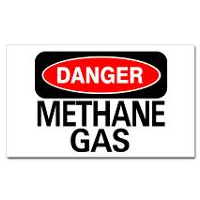First Mapping of Urban Greenhouse Gas Finds a Lot of Methane in L.A.

The good news is that scientists announced they have successfully measured carbon dioxide and methane across an urban area from an earthbound site, offering the promise that greenhouse gases might one day be mapped around the world.
The bad news, according to a research paper (pdf) published in the journal Atmospheric Chemistry and Physics, is that the site was the Los Angeles Basin and the findings of methane were up to 61% worse than expected.
“It’s a very significant increase in the estimate,” the project’s senior research scientist, Stanley Sander of NASA's Jet Propulsion Laboratory, said.
That estimate wasn’t particularly low to begin with. Scientists estimated levels of methane in Los Angeles as part of the landmark AB 32 cap-and-trade legislation passed in 2006, but subsequent testing indicated that those levels, although high, were actually too low.
A study published in 2013 claimed to have found the missing link explaining the discrepancy between expected and measured levels of methane in Los Angeles. Scientists working at the National Oceanic and Atmospheric Administration (NOAA) determined that leaks from natural gas (methane) delivery systems, geologic seepage from places like the La Brea tar pits, and leaks from oil and gas drilling accounted for the extra methane.
Those scientists measured gases that accompany methane under certain circumstances in tracking the true sources. For instance, methane leaked from natural gas pipelines would also have some measurable ethane.
NASA conducted its observations for two years from the top of Mount Wilson (elevation 5,700 feet) as part of the Megacities Carbon Project, a three-city pilot project that includes Paris and a city to be named, possibly São Paulo, Brazil. The goal is to map cities with more than 10 million people, because cities are the source of 70% of the world’s carbon emissions. Around 70% of that carbon emission comes from just 22 megacities.
Scientists used a spectrometer to “count” the molecules of methane, carbon dioxide (CO2) and other pollutants in the atmosphere over the 2,100-square-mile L.A. Basin. They didn’t set out to identify where the gases were coming from, but Sander said, “The ones we have been able to identify are—perhaps coincidentally, but perhaps not—located near large landfills.”
The highest concentrations of methane were found in eastern Los Angeles County and near the Rose Bowl. The stadium was constructed in 1922 on the site of an old garbage dump.
The instrument used to make the measurements, part of the California Laboratory for Atmospheric Remote Sensing (CLARS), points at one of 28 designated sites every 90 minutes during daylight hours. The sites include Angels Stadium in Anaheim, downtown Los Angeles, Palos Verdes, Huntington Beach and the Santa Anita Racetrack in Arcadia. “The instrument is like a stationary satellite,” said Clare Wong, a NASA postdoctoral fellow at JPL and the study’s lead author.
Methane is far less plentiful than carbon dioxide and is more broadly distributed. But it is the third-most prevalent greenhouse gas behind CO2 and water vapor, and is very efficient at trapping the heat that leads to global warming. It is 20 times more potent than carbon dioxide.
–Ken Broder
To Learn More:
L.A. Basin Methane Emissions Found Up to 61% Higher than Estimates (by Tony Barboza, Los Angeles Times)
There's a Lot More Methane in LA's Atmosphere than We Thought (by Xeni Jardin, BoingBoing)
NASA Mountaintop Sensor Finds High Methane over LA (Jet Propulsion Laboratory)
Solving the Case of California's Extra Methane (by Stephanie Paige Ogburn and ClimateWire, Scientific American)
Mystery Solved: Previously Unexplained Higher Levels of Greenhouse Gas in L.A. from Fossil-Fuel Sources (Cooperative Institute for Research in Environmental Sciences)
Mapping CH4: CO2 ratios in Los Angeles with CLARS-FTS from Mount Wilson, California (Atmospheric Chemistry and Physics) (pdf)
- Top Stories
- Controversies
- Where is the Money Going?
- California and the Nation
- Appointments and Resignations
- Unusual News
- Latest News
- California Forbids U.S. Immigration Agents from Pretending to be Police
- California Lawmakers Urged to Strip “Self-Dealing” Tax Board of Its Duties
- Big Oil’s Grip on California
- Santa Cruz Police See Homeland Security Betrayal in Use of Gang Roundup as Cover for Immigration Raid
- Oil Companies Face Deadline to Stop Polluting California Groundwater





